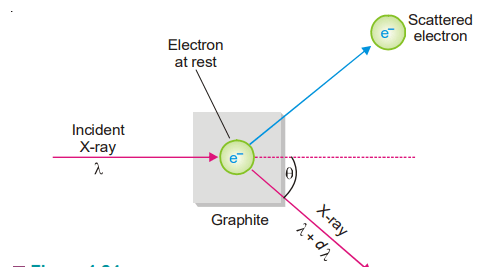A.H. Compton presented another evidence of the quantum theory, or photon theory, in 1923. In 1927, he was awarded the Nobel Prize for his discovery of the Compton Effect. When X-rays of wavelength’ contacted a piece of graphite, one electron was expelled, and the X-rays scattered at an angle had a longer wavelength, he proved.
Explanation of Compton Effect
Compton compared it to a ball striking a stationary ball, which is pushed away as the striking ball’s energy drops. As a result, he claimed that light radiation (X-rays) was made up of particles (photons) because the electron could not have been thrown out by a continuous wave. He imagined that a photon of incoming light collided with a stationary electron in graphite, losing some energy and so increasing the wavelength. Unless light radiation had particles or photons, this process could not have occurred.

By assuming photon-electron collisions to be perfectly elastic, Compton found that the shift in wavelength, dλ was given by the expression

where h is Planck’s constant, m is the mass of an electron, c the velocity of light, and θ the angle of scattering. The expression shows that dλ is independent of the nature of the substance and the wavelength of the incident radiation. Given the wavelength of a photon, one can calculate the momentum of the electron ejected.